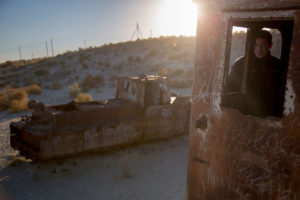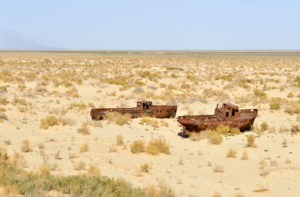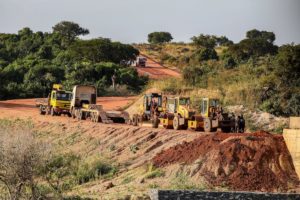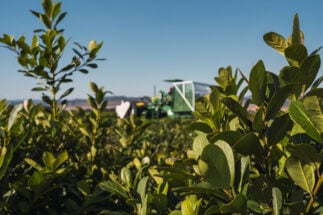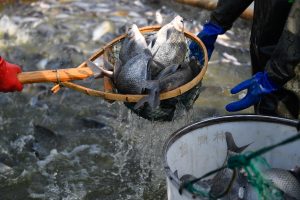A tiny crustacean that makes flamingos pink, is kept in novelty aquariums as a “sea monkey” and is a major component of the growing global aquaculture industry, is now one of the only living creatures left in the Uzbek part of the Aral Sea.
In the late 1950s, the Aral Sea produced up to 45,000 tonnes of fish in a year. By 2004, Uzbekistan’s section had lost every species of fish, according to Ablatdiyn Musaev, a biologist and researcher at the Karakalpakstan branch of Uzbekistan’s Academy of Sciences. A catastrophic failure of water management caused this, leaving many people destitute.
In the past 20 years, however, the cultivation of brine shrimp, or artemia, has offered communities a lifeline.
Every autumn in Karakalpakstan, western Uzbekistan, Nurlan Yusupov sets up his yurt on the coast of the Aral Sea and gets to work collecting minuscule artemia eggs. The eggs, also known as cysts, are scooped up from the surface of the water and the seashore. They will then be put into dry storage and shipped around the world to aquaculture farms. There, they will be added to water, hatch and be eaten by the farmed fish.
Yusupov is not alone: thousands of people now set up their homes for half a year in this remote area, more than 180km from the nearest town. From autumn, through the harsh sub-zero winter and into spring, this shoreline becomes an industrial hub.
Yusupov comes from a long line of fishers. But after the collapse of fisheries, he found work harvesting brine shrimp. “When the [brine shrimp] companies came here they gave us job opportunities,” he says, adding that the industry arrived at a time when locals “hadn’t any kind of opportunity”.
What happened to the Aral Sea?
In 1960, the Aral Sea was the world’s fourth largest inland lake, with a surface area roughly the size of the Republic of Ireland. But aggressive use of water for agriculture during the Soviet Union led to monumental environmental change, with scientists at the time calling the lake “nature’s mistake” and saying that it should “die beautifully”. In less than 50 years, it shrank by 90%. The exposed lake bed became the world’s youngest desert, the Aralkum.
The transboundary Amu Darya and Syr Darya rivers terminate at the Aral Sea. This means that decades of agricultural pesticides and other pollutants carried by these rivers have been deposited on the bed of the lake. As it dried up, dangerous salt crusts have been exposed, and toxic sand storms are common, which have detrimental effects on the health of local people.
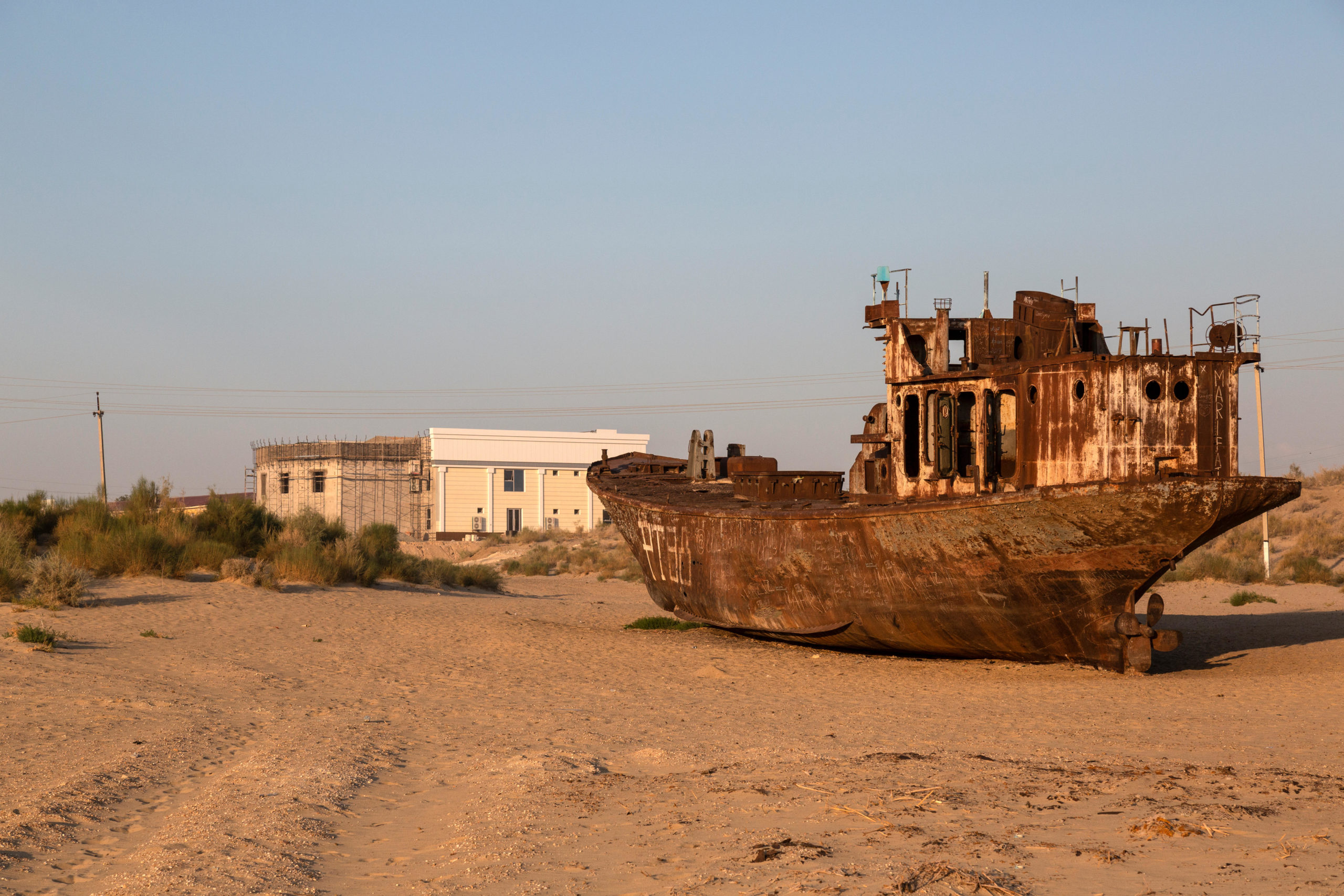
Researchers estimate that the loss of the Aral Sea has displaced 100,000 people and affected the health of five million.
The water body, split between Kazakhstan in the north and Uzbekistan in the south, became a number of separate lakes. As water has been lost, rates of salinity have soared, making most of the remaining lakes uninhabitable for fish. During the 1960s, more than 70% of the species of fish and invertebrates vanished.
Artemia flourish where few other species can
Brine shrimp were first found in the Uzbek section of the Aral Sea in 1998. They are thought to have been introduced in the droppings of migrating birds. After 2004, the population started to expand significantly, with no fish left as predators.
In 2010, the first large commercial harvest took place, according to Mambetov Amandjol, head of Aralskaaya Artemiya JSC, one of Uzbekistan’s artemia processing plants. Since then, operations have expanded in the West Aral – the long thin remaining water body on Uzbek territory.
The Great Salt Lake in Utah is the world’s largest producer of artemia cysts, with an annual harvest worth an estimated USD 100 million.
Scientists developed a system for managing harvest quotas in 1994. John Luft, head of the Great Salt Lake Ecosystem Program, says that the “Great Salt Lake was the first brine shrimp fishery basically in the world”, adding that “when we first started this programme, nobody looked at Great Salt Lake because they thought ‘It’s a dead lake with no fish.’”
Now, Luft says, the stable artemia population is a crucial food source for approximately 10 million migratory birds.
The artemia industry has come to underpin the multi-billion dollar aquaculture sector. Globally, fish and crustaceans living in controlled conditions consume 3,500-4,000 tonnes of artemia eggs per year, says Patrick Sorgeloos, founder of the Laboratory of Aquaculture & Artemia Reference Center, part of Ghent University, who has been studying the crustacean since 1969.
The extremophiles – meaning able to survive in extreme environments – are from the age of the dinosaurs, explains Nagmet Aimbetov, another researcher at Uzbekistan’s Academy of Sciences.
When conditions are inhospitable, artemia can switch from live birth to cyst production. The cysts may be metabolically dormant for hundreds, perhaps thousands, of years, says Ablatdiyn Musaev. When the environment becomes more favourable, the cysts hatch. This makes cysts perfect for industrial transportation and dry storage. Hatcheries can add the cysts to water, and within a day they have hatched and can be used as food in fish nurseries.
“They are a primitive organism, but with a very sophisticated reproductive system,” says Sorgeloos, who describes their eggs as “magic powder”.
Artemia are able to survive extreme salinity, because they can excrete salt through their gills. In wild water bodies, sizeable populations only develop when salinity reaches 80-100 grams per litre, says Sorgeloos – this being the point at which most of their aquatic predators die out.
Today, artemia is the main benefit for this region… 80 people [working here] feed their family from artemiaMambetov Amandjol, head of an artemia processing plant
Cultivation of artemia can be a lifeline for communities grappling with the impacts of climate change and water management crises.
“When the sea dried, there were no fish, no jobs, no conditions to live,” says Mambetov Amandjol, the head of the artemia processing plant. The factory he now manages was built for processing fish and employed more than 2,000 people, including his father, who worked on the canning line.
“Today, artemia is the main benefit for this region… 80 people [working here] feed their family from artemia.” For the Muynak district in Karakalpakstan, the artemia industry is the biggest bringer of jobs, contributing to the employment of more than 5,000 people, says Amandjol.
Research, livelihoods and food: A resource in the face of climate change
The uses of artemia extend beyond aquaculture. Wei-Jun Yang, a professor at the College of Life Science of Zhejiang University in China, uses artemia in research on therapy-resistant, dormant cancer stem cells.
“Many of the targeted aspects of cellular dormancy, particularly relating to cancer, have been hard to identify and difficult to track in mammals,” said Yang, speaking during a conference on artemia. “Artemia displays one of the most profound periods of embryonic dormancy of any known species… Our findings may pave the way for novel clinical opportunities in the treatment of a wide range of cancers.”
Brine shrimp also create an opportunity for the world’s seasonal salt farmers to generate extra income. In Vietnam, more than 700 salt farms have already integrated cultivation, which has resulted in farmers multiplying their income by three to five times, said Van Hoa Nguyen, professor of aquaculture at Can Tho University in Vietnam, speaking during the same conference.
Artemia converts microalgae and particulate matter into high-quality protein. Eating artemia is like eating plankton.Patrick Sorgeloos, Laboratory of Aquaculture & Artemia Reference Center
Finally, the shrimp can be a cheap, low-impact source of protein, says Sorgeloos. “Artemia is the lowest in the food chain possible,” he explained. “You can compare it with krill: artemia converts microalgae and particulate matter into high-quality protein. Eating artemia is like eating plankton.”
In Vietnam’s Mekong Delta, omelette made from brine shrimp biomass, chicken eggs, rice flour and vegetables has been a regular meal for some communities since the 1990s. This recipe offers a partial or full alternative to the traditional crab and fish cakes. “Direct consumption of brine shrimp by humans has been and continues to be practised by indigenous tribes in the Americas and Africa,” added Nguyen.
However, Sorgeloos and other international experts and organisations, such as GIZ (Germany’s main development agency), stress that this does not mean rice farmers should flood land and freshwater with saltwater in order to create conditions for the shrimp – and authorities should guard against such practices. Rather, artemia cultivation should be looked to when other income sources have become impossible, as in the West Aral.
What does the future look like for artemia and the Aral Sea?
Since the plight of the Aral became well-known, there have been numerous calls to reverse the damage done during the Soviet era. However, with no major projects to restore water to the Uzbek side, experts on the Aral Sea tell The Third Pole that there is little chance of the lake being revived in Uzbekistan, at least in the next 100 years.
“There is general consensus that the Aral Sea will not return to its 1960 level,” said Kate Shields, a geography PHD student at the University of Oregon in the US, commenting for an upcoming documentary Mission: Find Aral. “You can see this reflected in the text of the logo of the UN Multi-Partner Human Security Trust Fund for the Aral Sea Region in Uzbekistan: ‘Sea is gone, people are not.’”
For now, the priority is to ensure that the Uzbek Aral Sea does not deteriorate further – and lose the economic lifeline currently offered by the brine shrimp industry. Artemia depend on microalgae in the lake for food; further water loss would push salinity levels beyond what the microalgae could endure. In the West Aral, salinity levels were 175 grams per litre of water in 2021 (from 10 g/l in 1960) and are increasing by 4-5 g/l every year, according to Ablatdiyn Musaev’s research.
In the past decade, the Aral Sea’s commercial quotas of “wet product” – which refers to the weight of artemia cysts prior to processing – have rapidly increased. They rose from 30 tonnes in 2010 to 2,000 tonnes in 2020, according to Amandjol. But in the segregated West Aral, the hotspot for the artemia harvest, there are questions about the site’s longevity in light of rising salinity levels. Musaev’s research has documented low reproductive rates in the shrimp, suspected to be caused by loss of algae. Musaev and Sorgeloos estimate that the lifespan of artemia harvests from this site is 2-10 years.
Sorgeloos stresses the “critical need” for sustainable quotas in artemia fisheries worldwide.
Then there is the question of the chemical crust on the bed of the lake. Could these pollutants find their way into the shrimp, and therefore the food chain?
“Yes, this is possible,” says Sorgeloos. However, he adds, a variety of tests are carried out on the cysts, and their success as a food source for other species indicates that they “do not contain high levels of toxicants”.
Nevertheless, this, combined with the West Aral’s uncertain future, is a good motivation to move toward different methods of cultivation. A GIZ project is currently underway to develop aquaculture in abandoned fields where the soil is too saline to grow crops – away from the Aral lake bed. Researchers are also experimenting with using other water sources in the artemia industry. Saline water wells, agricultural drainage and even urban waste water could be mixed with salt from a local salt reservoir, to create man-made, self-sustaining artemia ponds. Such practices are already in use in artemia cultivation around Lake Urmia in Iran.
As the artemia industry grows, there is a need to address issues like food safety, sustainable harvesting and biosecurity. To this end, the International Artemia Aquaculture Consortium, a global collective of researchers and institutions, plans to launch later in 2022, pending recognition by the Food and Agriculture Organization of the United Nations. Among its primary functions would be to establish an international certification system for artemia cultivation.
The author is working on an upcoming documentary ‘Mission: Find Aral’, a three-part series exploring the past, present and future of the Aral Sea region in Uzbekistan. ‘KURT’, an abridged video version of this story, is available to watch here.


